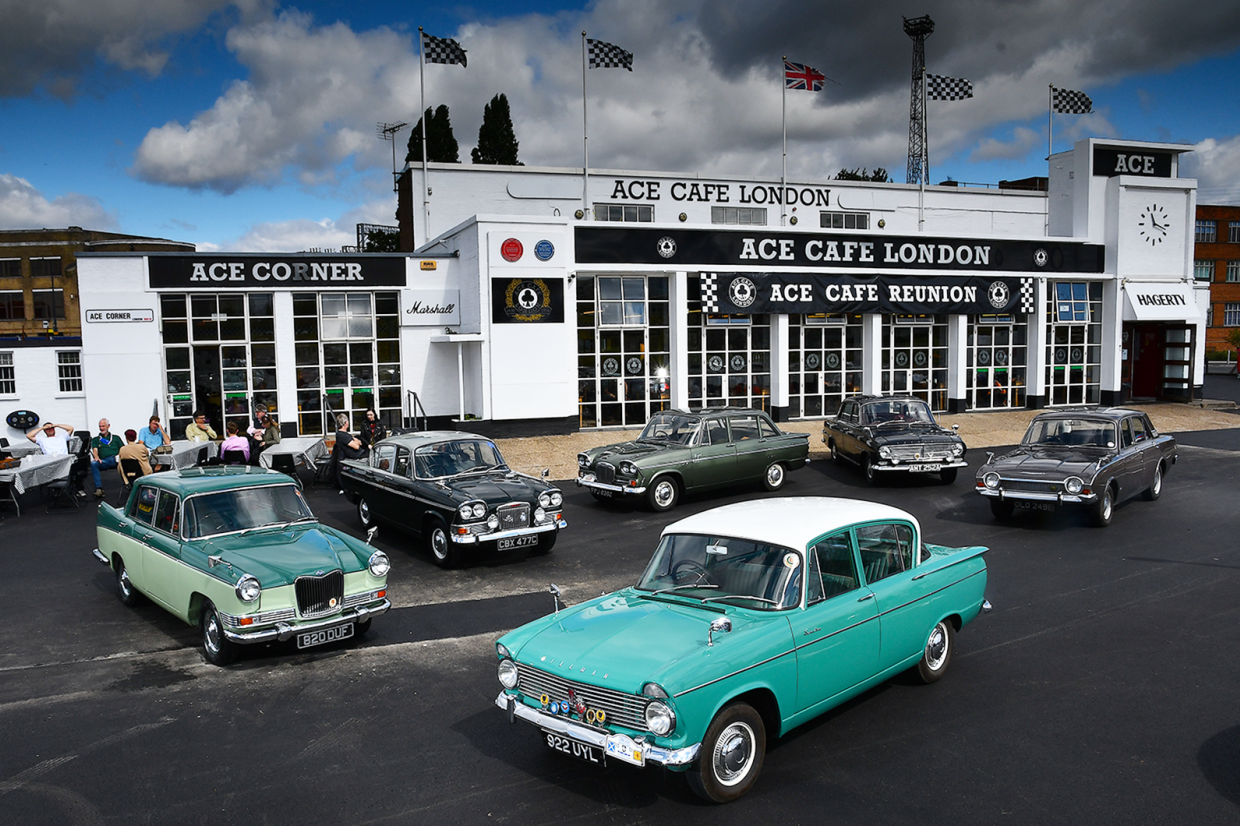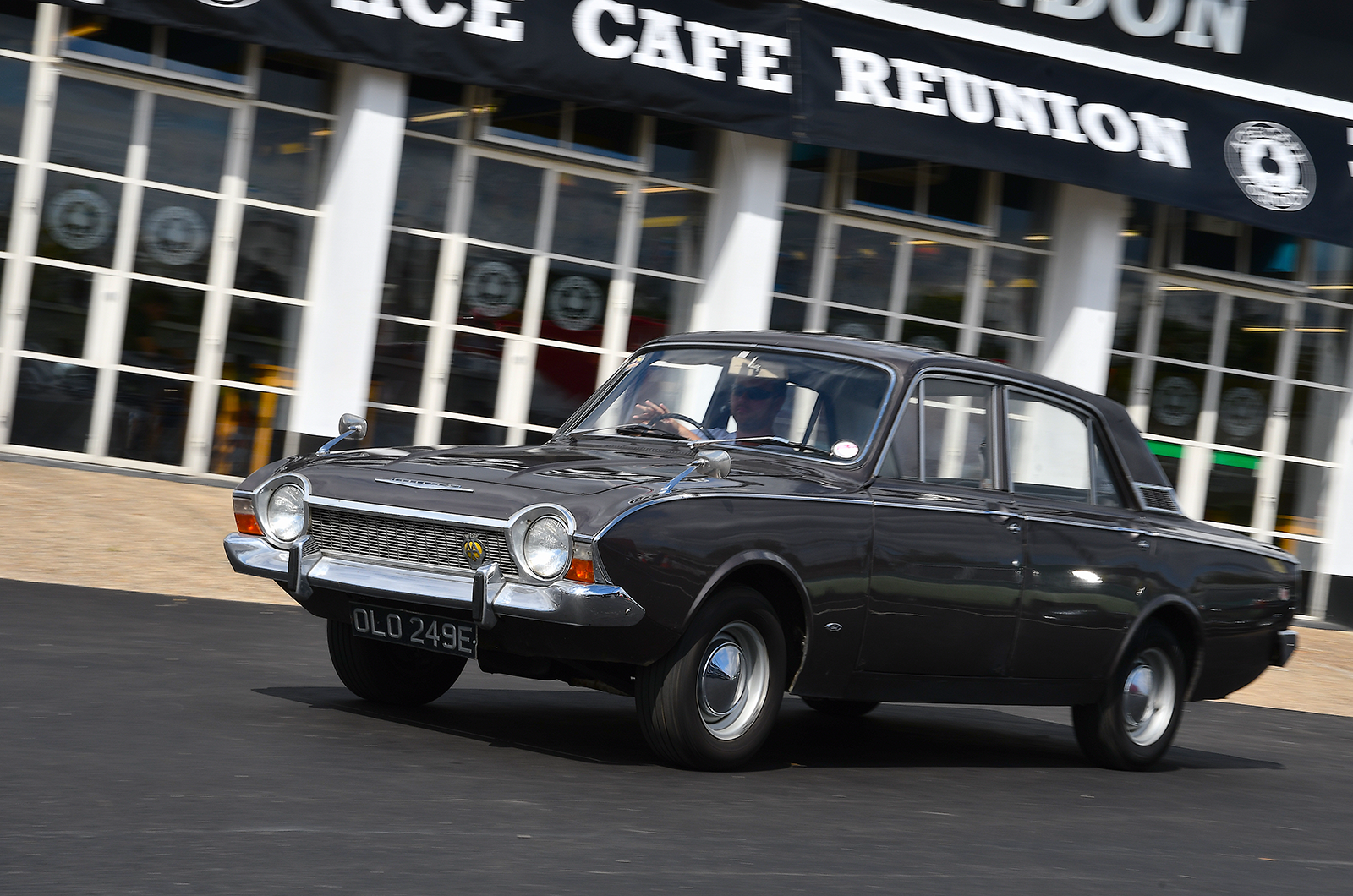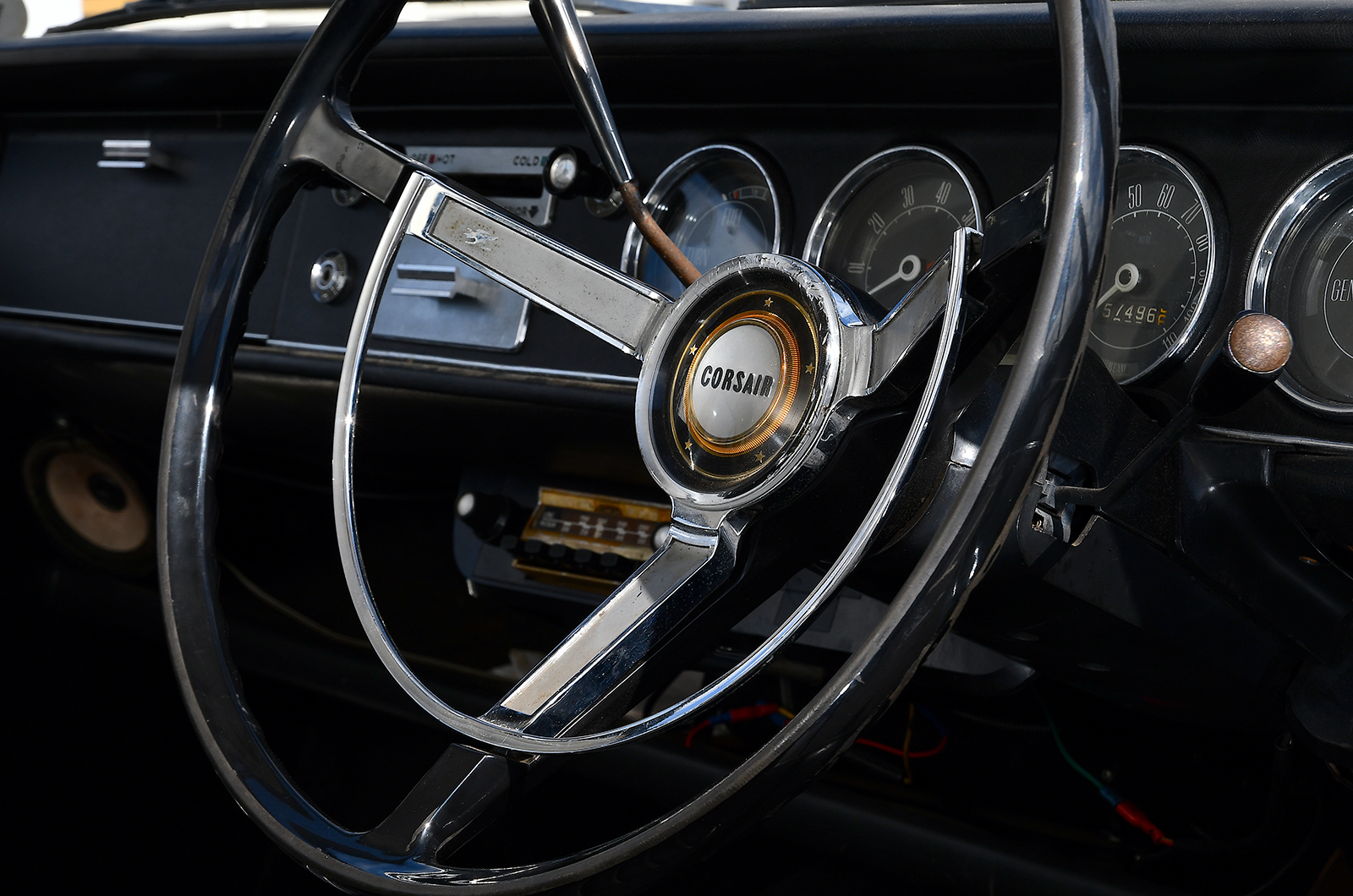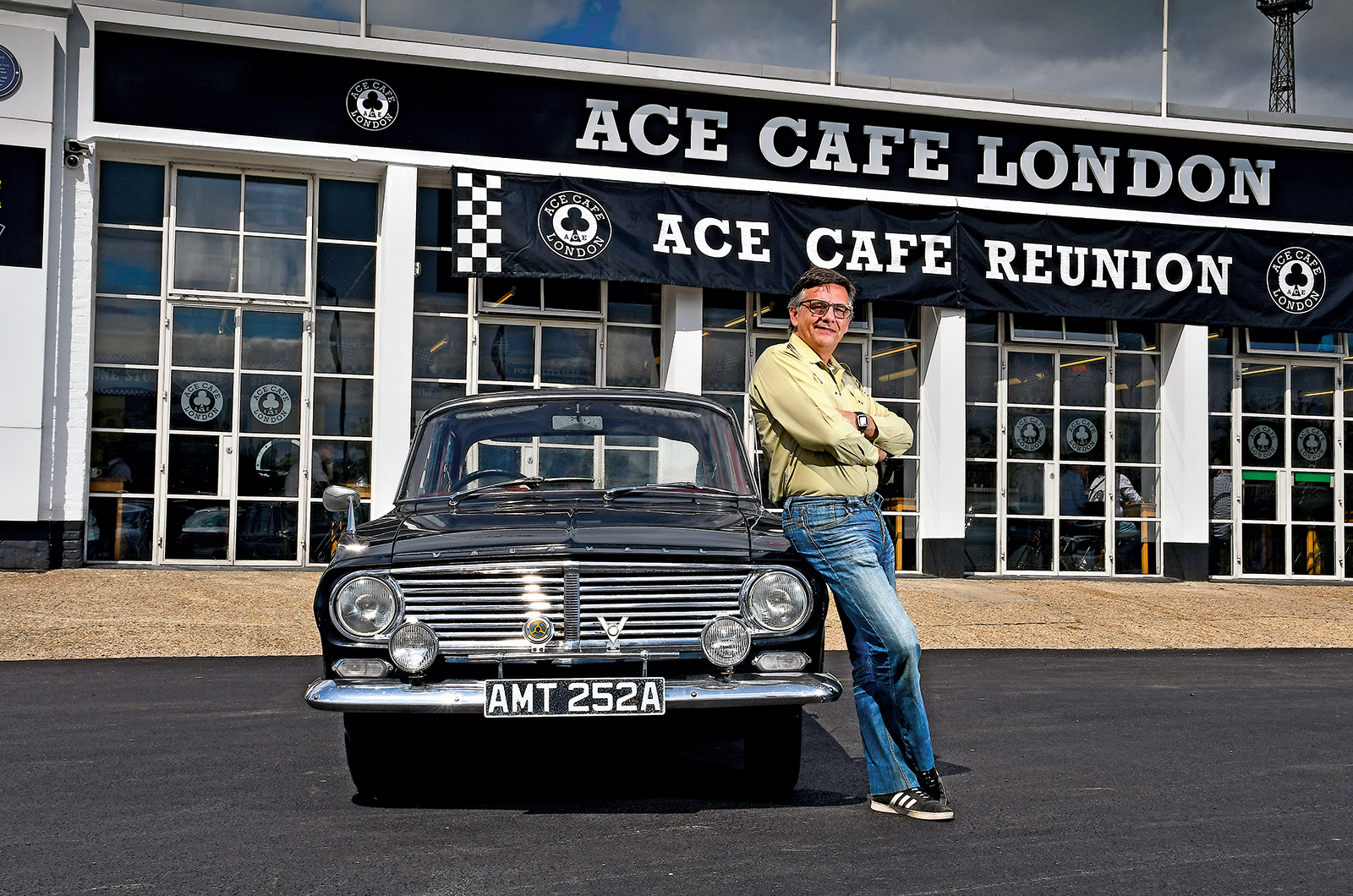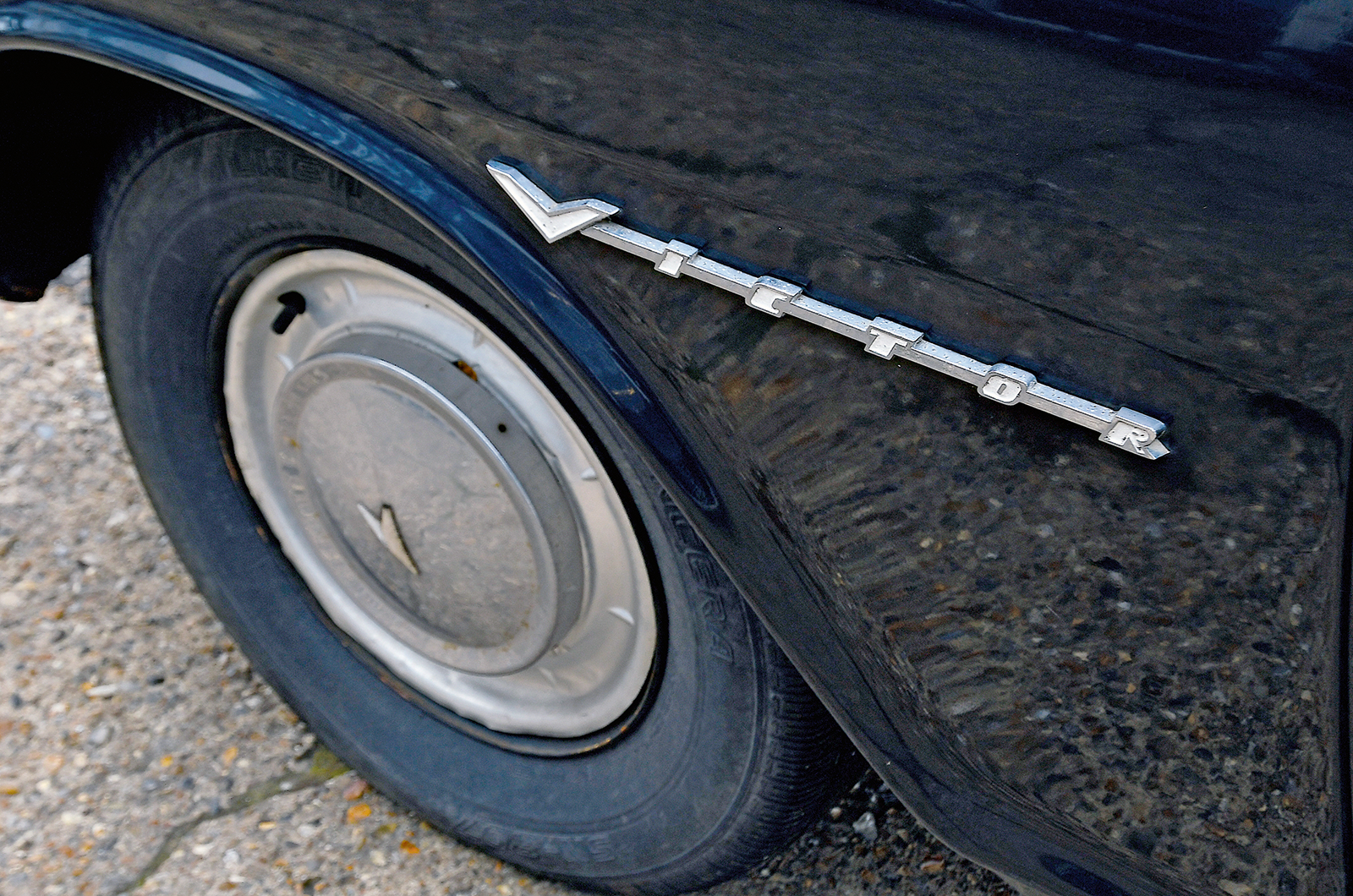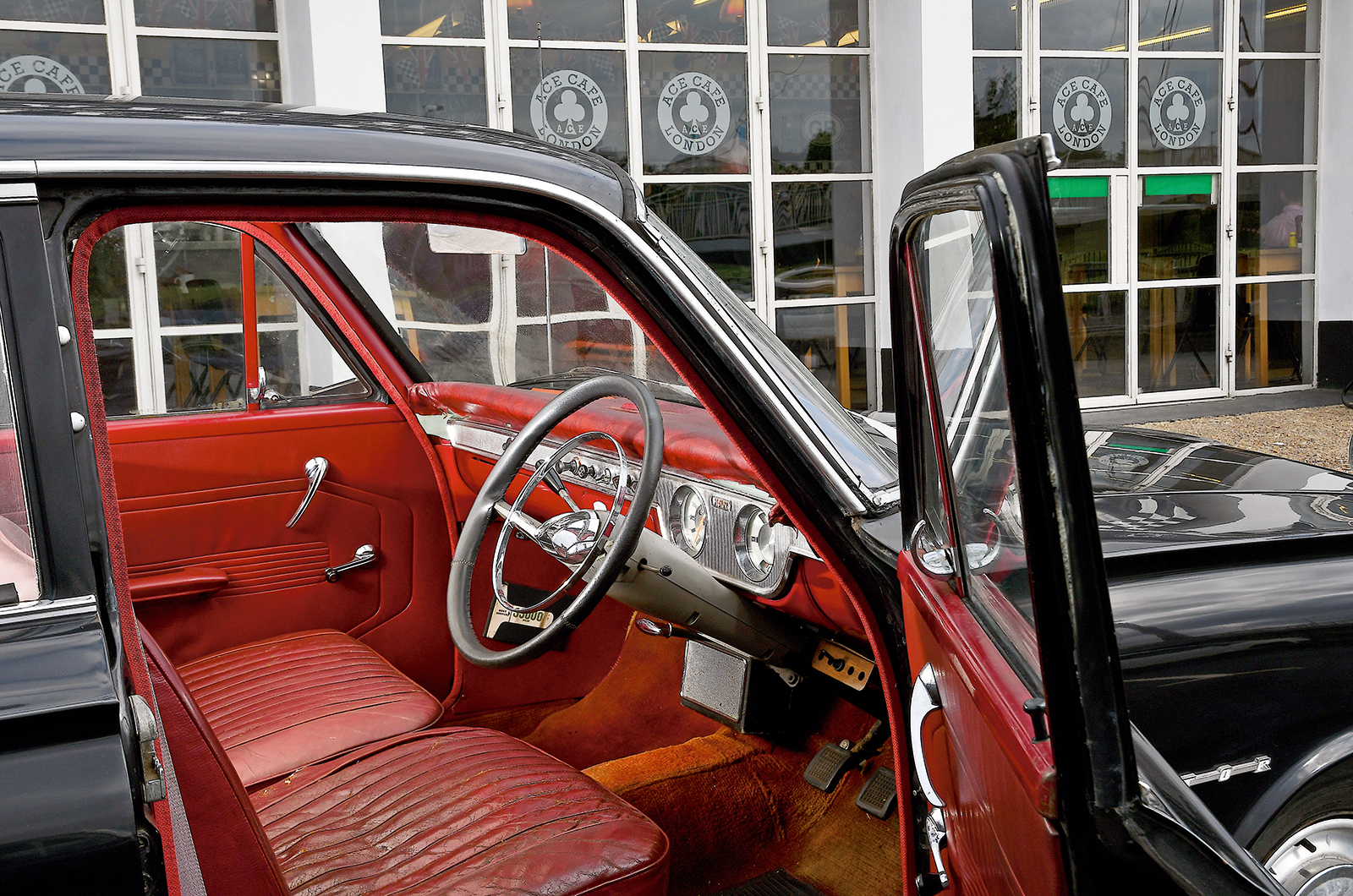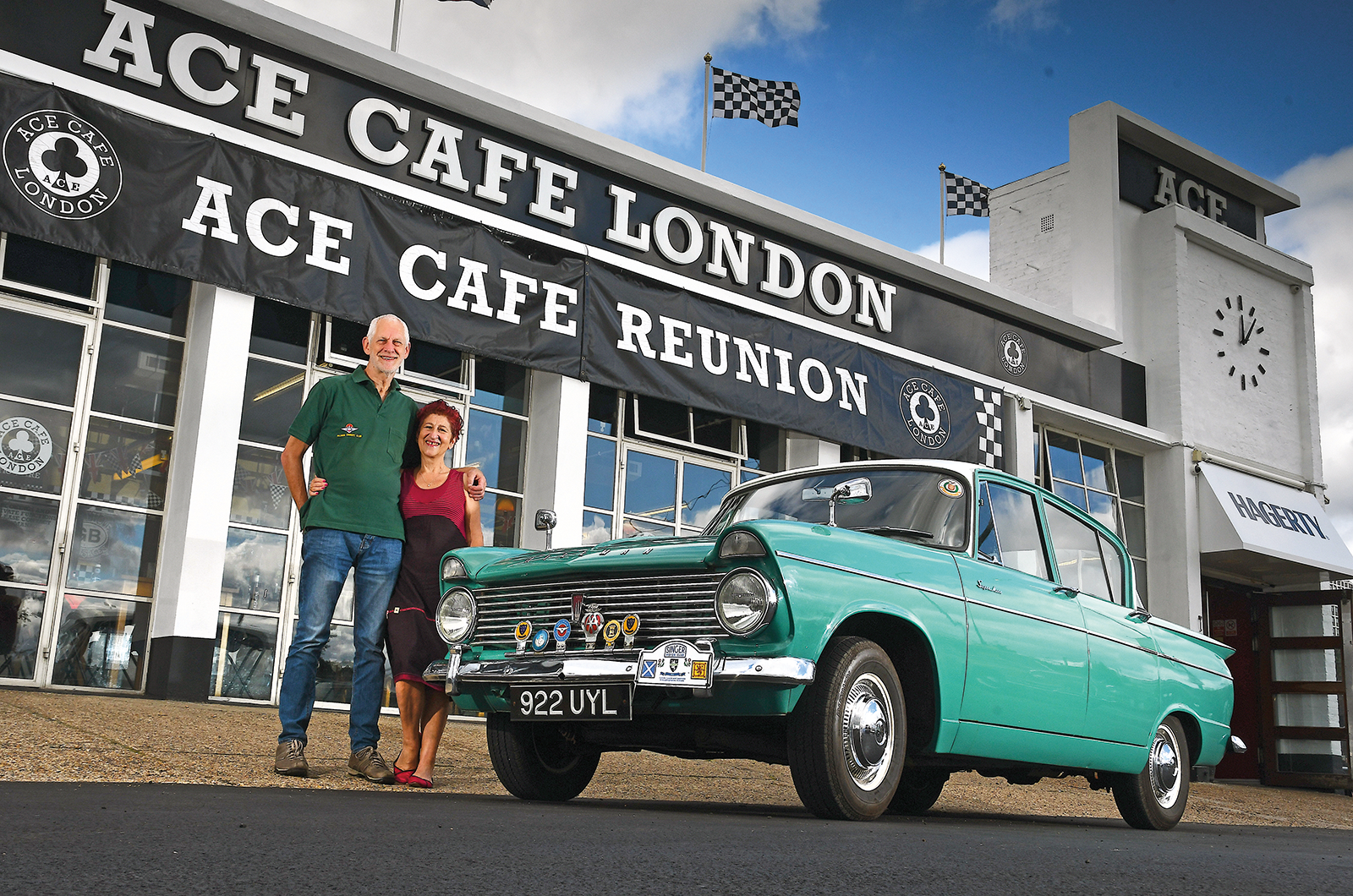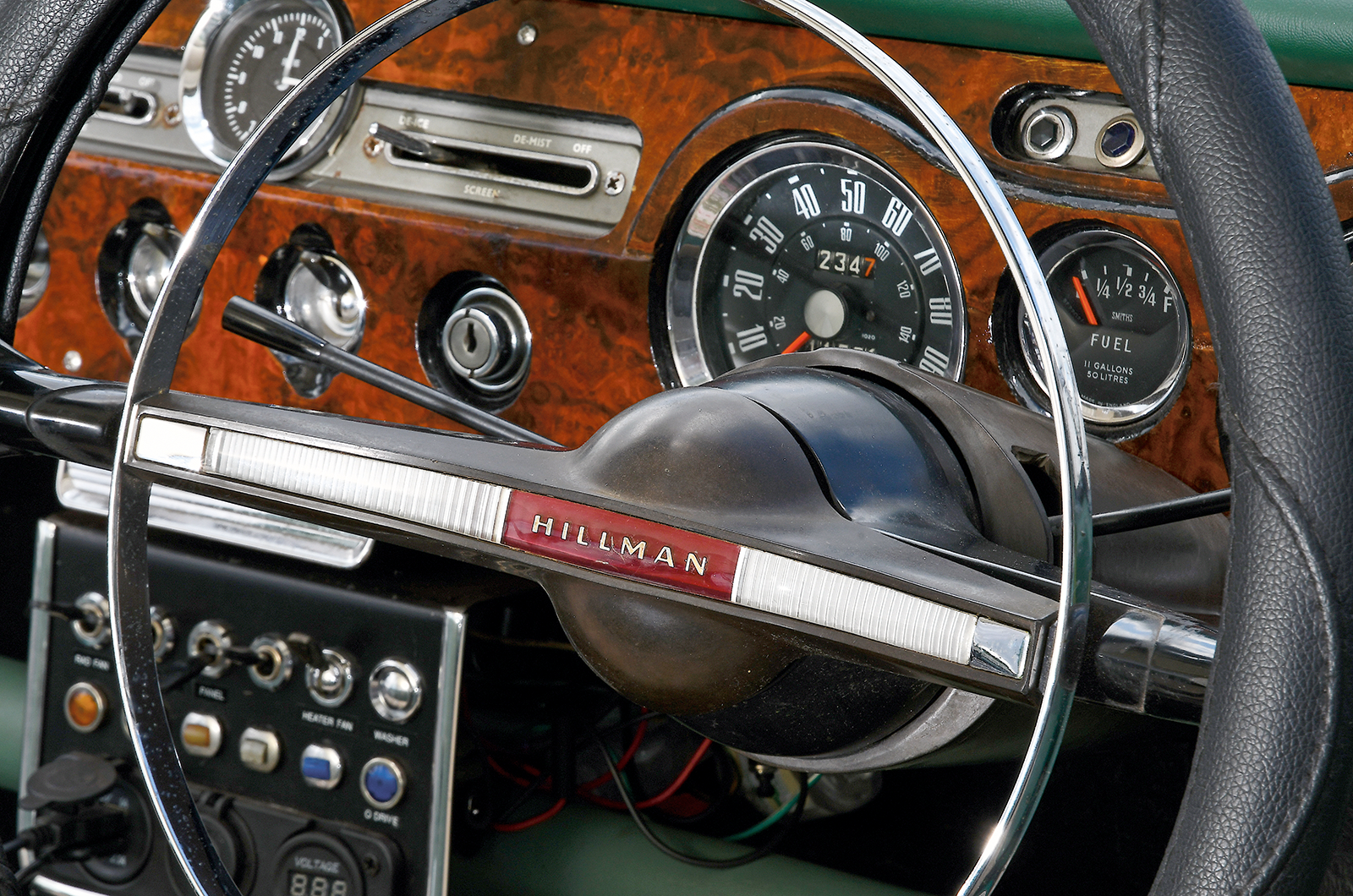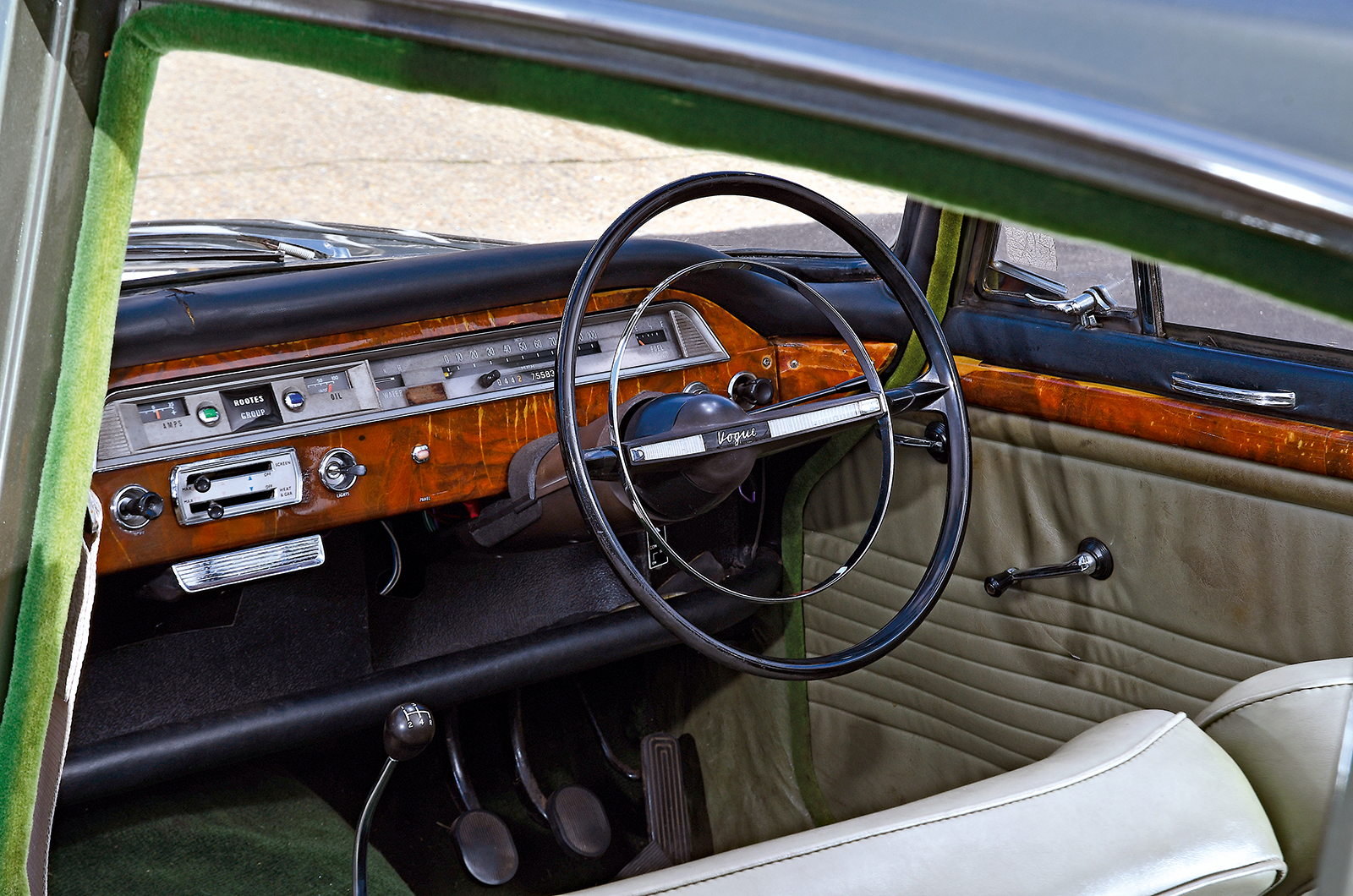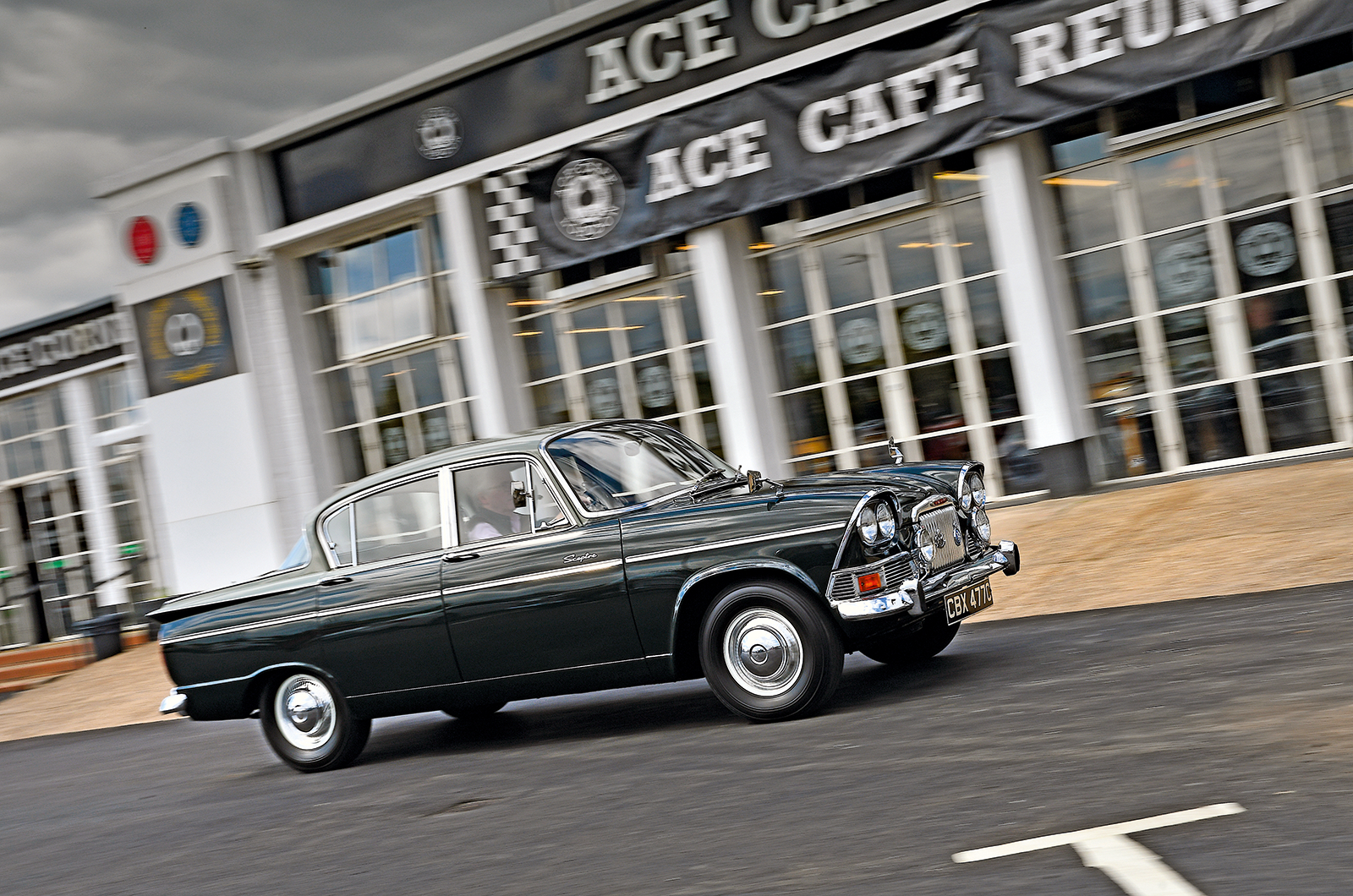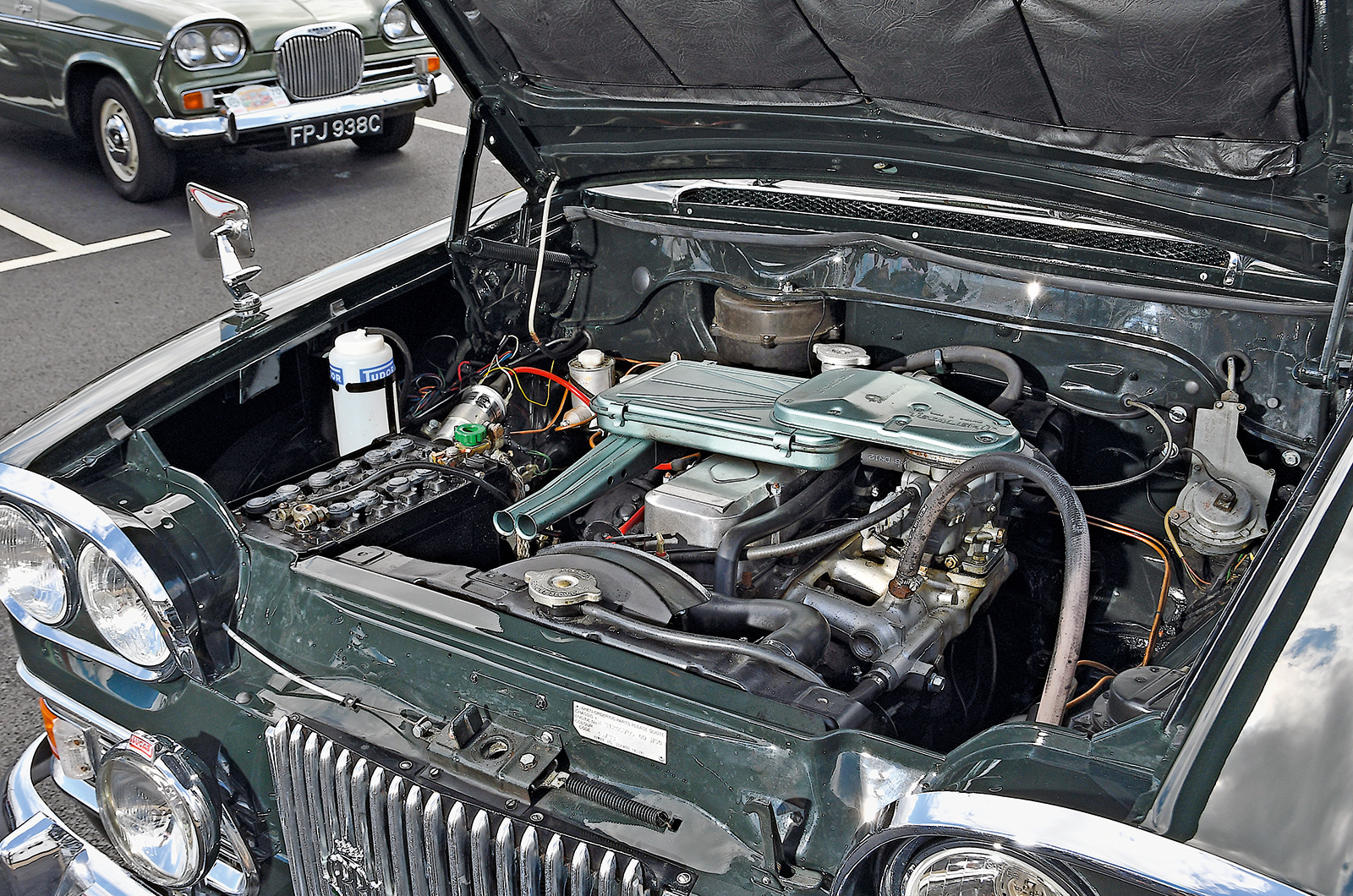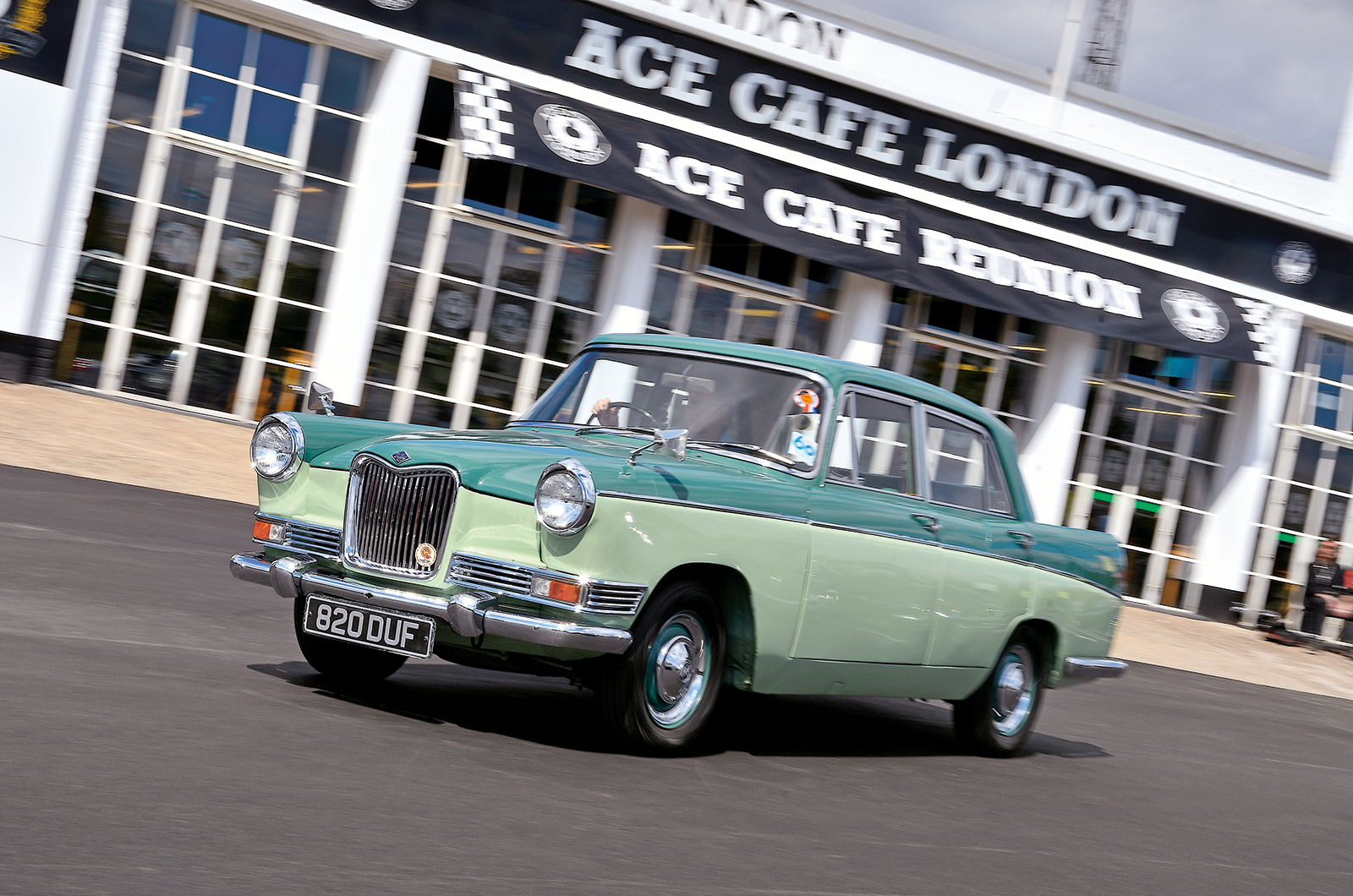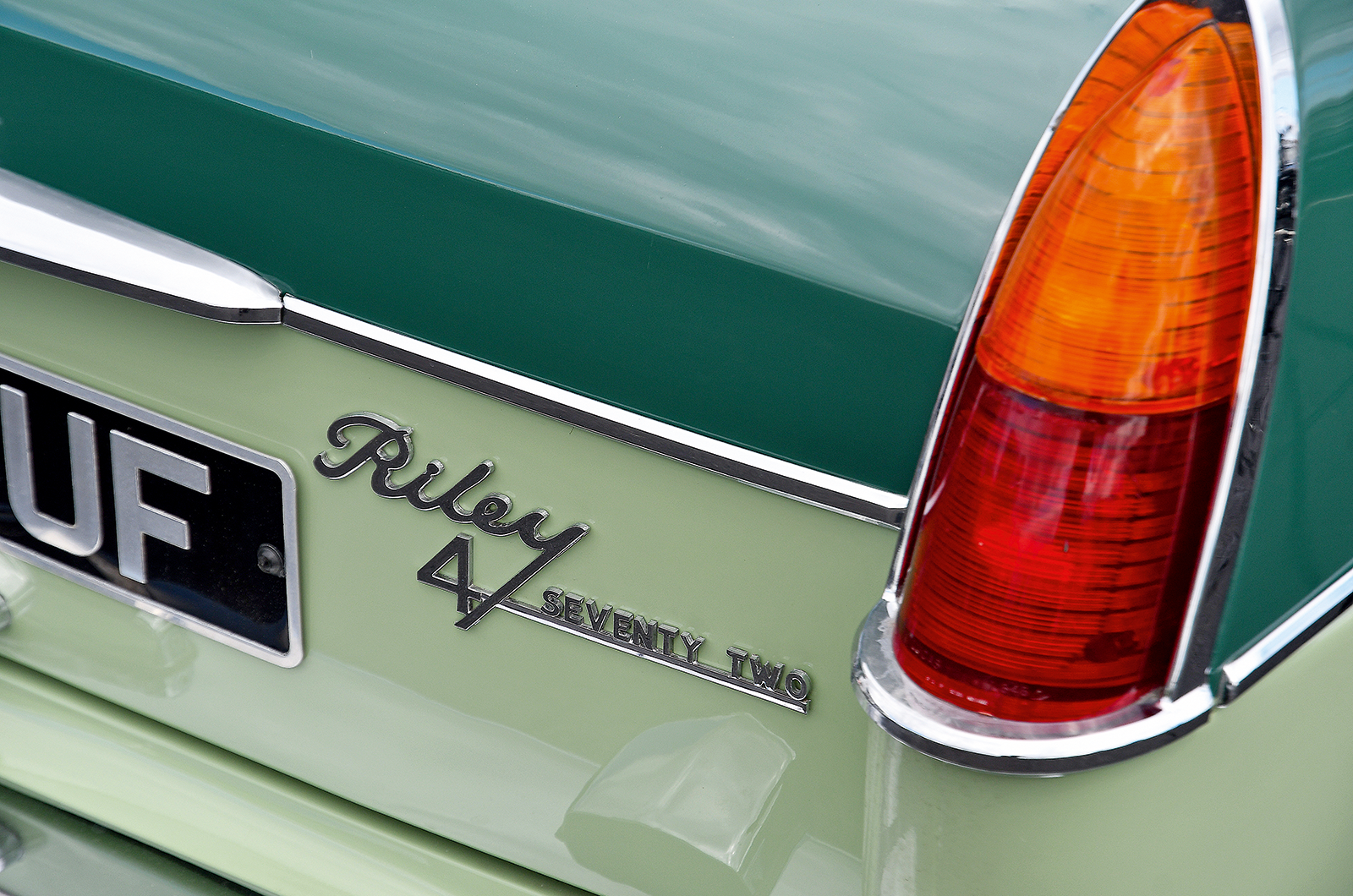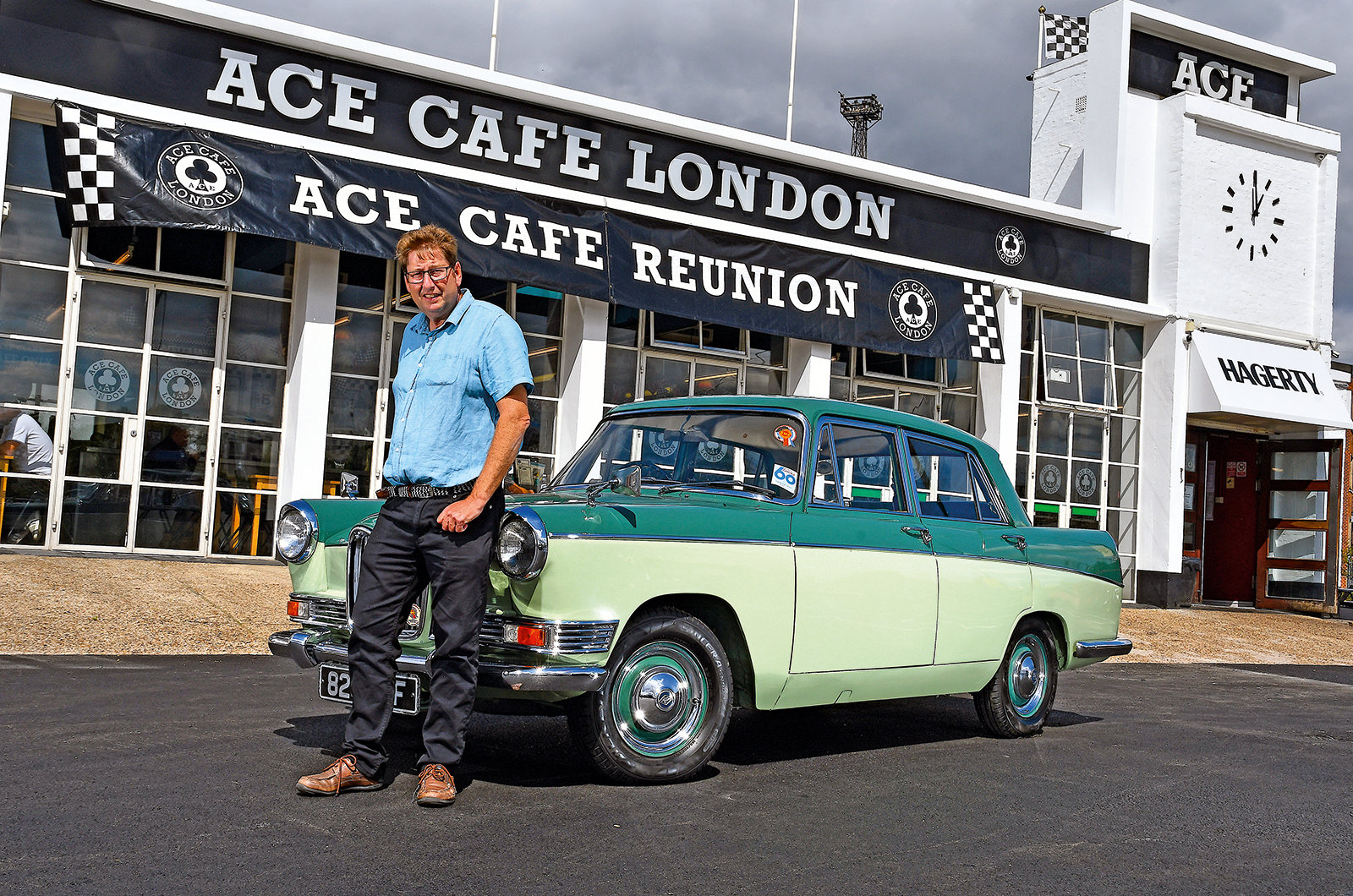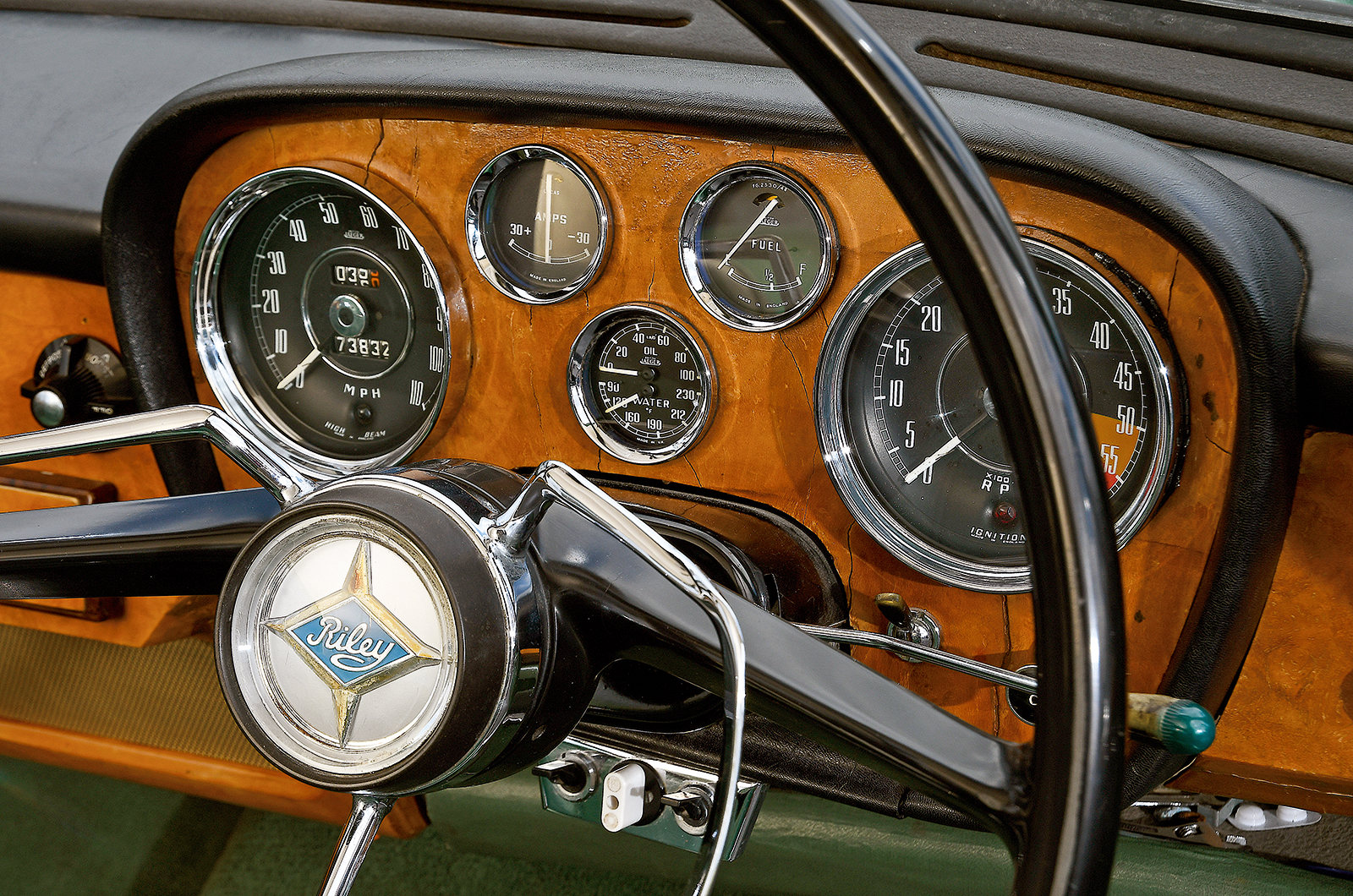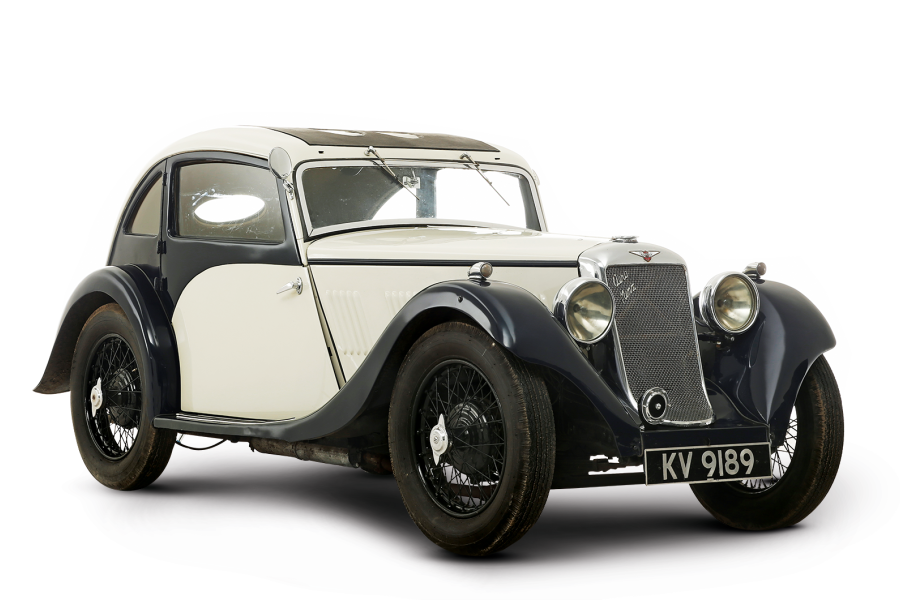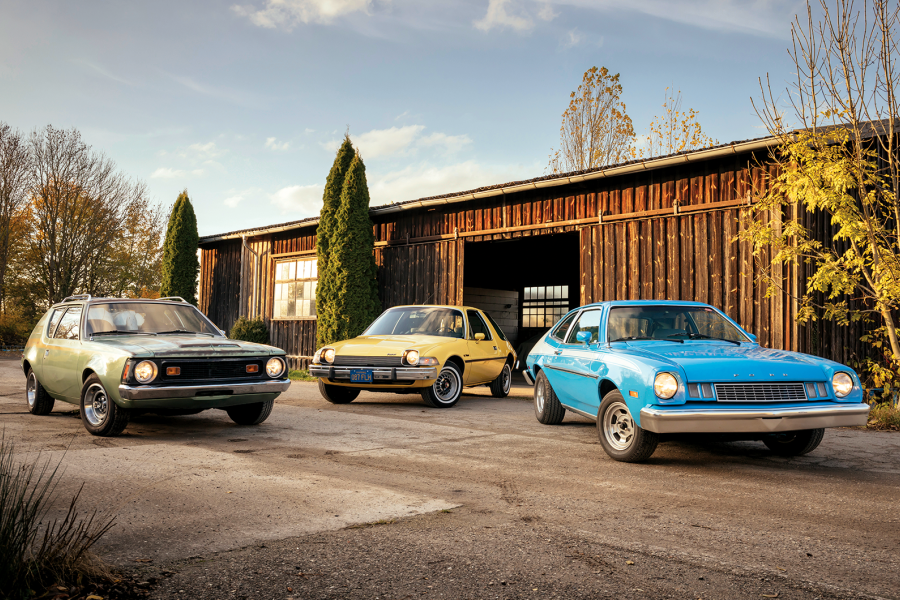Two years later, the MkII gained a new frontal treatment and the five-bearing 1725cc engine, making this 1965 Sage Green over Velvet Green example one of the last MkIs.
It also has a remarkable history, as owner Nicholas Harries explains: “My grandfather bought it new, and I’ve known the car since I was born.
“I learnt to drive in her, and became her custodian when he died in ’85.”
Harries finds the Humber’s road manners to be excellent: “She is as familiar to me as an old, well-fitting glove.”
The Solex carburettor boosts the 1.6 engine to 80bhp
He continues: “The gearchanges are smooth and easy, and the overdrive makes motorway cruising a breeze.
“Refitting the original – and in my view unjustly maligned – Solex PAIA carb and air filter after 30-odd years of having a Weber has made her quieter and more refined, with no adverse effect on her performance.”
It could be argued that the Humber’s lines were already faintly passé by the time of the model’s launch.
The Arrow series replaced the MkII in late 1967, by which time it looked as surreally dated as a Teddy Boy finding himself in the audience for a Pentangle concert.
Badge-engineering created the ’Farina’ range, with the Riley at its top
Yet the Sceptre is a car of genuine verve and considerable charm.
It represented affordable Americana for the middle-class professional who was definitely, to use a favourite ’60s phrase, on the move.
While the Ford, the Vauxhall and the Rootes trio would probably have appealed to Britons whose role models were the kind of fast-talking individuals played by Ian Hendry in Live Now, Pay Later or The Beauty Jungle, the world of the Riley 4/72 driver was one of order, sobriety and pipe-smoking.
Its owners’ radio station of choice would doubtless have been the BBC Home Service, and if they did have a cinematic role model, it was more likely to be Scotland Yard’s crisply-spoken host Edgar Lustgarten.
The 1622cc 4/72 replaced the 1489cc 4/68
Yet Alan Marshall’s 1964 Riley is undeniably glamorous, albeit in a highly respectable manner.
The combination of extensive chrome plating and the classy Porcelain Grey over Almond Green paint finish highlights the 4/72’s Italian American lines.
The diamond-badged version of the BMC 1½-litre ‘Farina’ range took its bow in early 1959 as the 4/68.
It was facelifted in 1961 as the 4/72, with anti-roll bars front and rear, a longer wheelbase and a 1622cc engine.
The Riley with its owner Alan Marshall
Marshall came by his Riley in 1982.
“It’s my second Farina,” he explains, “and it does feel quicker than my old Wolseley.
“Over the years, I’ve changed the needles in the SU carburettors, which makes a difference to the performance.”
He has also replaced the crossply tyres with radials to improve the handling, but admits: “You still can’t go screaming into corners! It is a shame that BMC did not offer the 4/72 with overdrive or the 1.8-litre MGB engine.”
The Riley has a well-appointed cabin
When 4/72 production ended in 1969, it sadly marked the end of the Riley name.
Marshall’s Farina exemplifies the appeal of this regal brand: traditional values in a modernist package – or, as BMC put it, a car for the motorist who ‘travels far and fast’.
The sales copy further targeted the nation’s social climbers, boasting: ‘We often sell this car to people who haven’t got a chauffeur.’
If the ambitious young Basil Fawlty didn’t crave a Riley, he probably should have done.
The Humber Sceptre wins this particular battle, in part due to its eye-catching dash
None of these compact saloons represented a breakthrough in automotive technology, but that was never their raison d’être.
Instead, each succeeds in marrying conventional engineering with a certain degree of flair.
If I opt for the Sceptre, it is simply for its sheer exuberance.
It’s a car equally suited to the ambitious business driver or the Vince Taylor-style singer making a stand against those long-haired beat combos. And who could resist such a dashboard?
Images: John Bradshaw
Thanks to The Ford Corsair Owners’ Club; Eddie Foster, The Cambridge-Oxford Owners’ Club; Rob and James Moss, The Chevronic Centre; Mark Wilsmore, Ace Cafe London
Factfiles
Ford Corsair V4 GT
- Sold/no built 1965-’70/135,000 (all V4s)
- Construction steel monocoque
- Engine all-iron, ohv 1996cc V4, single Zenith carburettor
- Max power 88bhp @ 4750rpm
- Max torque 117lb ft @ 2750rpm
- Transmission four-speed manual, RWD
- Suspension at front MacPherson struts, anti-roll bar rear live axle, semi-elliptic leaf springs, telescopic dampers
- Steering recirculating ball
- Brakes discs/drums, with servo
- Length 14ft 9in (4496mm)
- Width 5ft 6in (1676mm)
- Height 4ft 10in (1473mm)
- Wheelbase 8ft 5in (2565mm)
- Weight 2273lb (1030kg)
- 0-60mph 14.7 secs
- Top speed 91mph
- Mpg 24.8
- Price new £909
- Now £5-8000*
Vauxhall Victor FB
- Sold/no built 1961-’64/328,640
- Construction steel monocoque
- Engine all-iron, ohv 1508cc ‘four’, single Zenith carburettor
- Max power 56bhp @ 4600rpm
- Max torque 86lb ft @ 2200rpm
- Transmission three-speed manual, RWD
- Suspension at front wishbones, coil springs, anti-roll bar rear live axle, semi-elliptic leaf springs, telescopic dampers f/r
- Steering recirculating ball
- Brakes drums
- Length 14ft 5¼in (4400mm)
- Width 5ft 4in (1626mm)
- Height 4ft 9in (1448mm)
- Wheelbase 8ft 4in (2540mm)
- Weight 2485lb (1127kg)
- 0-60mph 23.4 secs
- Top speed 77mph
- Mpg 28
- Price new £744
- Now £4-8000*
Hillman Super Minx Series I
- Sold/no built 1961-’62/n/a
- Construction steel monocoque
- Engine all-iron, ohv 1592cc ‘four’, Zenith-Stromberg carburettor
- Max power 62bhp @ 4800rpm
- Max torque 86lb ft @ 3000rpm
- Transmission four-speed manual, RWD
- Suspension at front double wishbones, coil springs, anti-roll bar rear live axle, semi-elliptic leaf springs; telescopic dampers f/r
- Steering recirculating ball
- Brakes drums, with servo
- Length 13ft 9½in (4191mm)
- Width 5ft 2½in (1588mm)
- Height 4ft 10½in (1480mm)
- Wheelbase 8ft 5in (2565mm)
- Weight 2355lb (1068kg)
- 0-60mph 22.2 secs
- Top speed 86mph
- Mpg 25
- Price new £854
- Now £3-7000*
Singer Vogue Series III
- Sold/no built 1961-’66/47,769
- Construction steel monocoque
- Engine iron-block, alloy-head, ohv 1592cc ‘four’, Solex carburettor
- Max power 79bhp @ 5000rpm Max torque 91lb ft @ 3500rpm
- Transmission four-speed manual, RWD
- Suspension at front double wishbones, coil springs rear live axle, semi-elliptic leaf springs; telescopic dampers f/r
- Steering recirculating ball
- Brakes discs/drums
- Length 13ft 11in (4242mm)
- Width 5ft 3in (1619mm)
- Height 4ft 10½in (1480mm)
- Wheelbase 8ft 5in (2565mm)
- Weight 2407lb (1092kg)
- 0-60mph 17.7 secs
- Top speed 90mph
- Mpg 23
- Price new £844
- Now £4-8000*
Humber Sceptre MkI
- Sold/no built 1963-’65/17,011
- Construction steel monocoque
- Engine iron-block, alloy-head, ohv 1592cc ‘four’, Solex carburettor
- Max power 80bhp @ 5200rpm
- Max torque 91lb ft @ 3500rpm
- Transmission four-speed manual with overdrive, RWD
- Suspension at front double wishbones, coil springs rear live axle, semi-elliptic leaf springs; telescopic dampers f/r
- Steering recirculating ball
- Brakes discs front, drums rear
- Length 13ft 9½in (4204mm)
- Width 5ft 3½in (1607mm)
- Height 4ft 9in (1448mm)
- Wheelbase 8ft 5in (2565mm)
- Weight 2478lb (1124kg)
- 0-60mph 17.1 secs
- Top speed 90mph
- Mpg 23
- Price new £997
- Now £4-8000*
Riley 4/72
- Sold/no built 1961-’69/15,151
- Construction steel monocoque
- Engine all-iron, ohv 1622cc ‘four’, twin SU carburettors
- Max power 68bhp @ 5000rpm
- Max torque 89lb ft @ 2500rpm
- Transmission four-speed manual, RWD
- Suspension at front double wishbones, coil springs rear semi-elliptic leaf springs; telescopic dampers, anti-roll bar f/r
- Steering cam and lever
- Brakes drums
- Length 14ft 10½in (4534mm)
- Width 5ft 3½in (1600mm)
- Height 4ft 11¾in (1518mm)
- Wheelbase 8ft 3¼in (2521mm)
- Weight 2531lb (1148kg)
- 0-60mph 19.5 secs
- Top speed 86.5mph
- Mpg 25
- Price new £1097
- Now £6-10,000*
*Prices correct at date of original publication
READ MORE
17 ’60s unicorn classics
Don’t buy that, buy this: Hillman Imp vs Mini
Battle for the boardroom: Austin 3 Litre vs Ford Executive vs Vauxhall Viscount
Andrew Roberts
Andrew is a long-time contributor to Classic & Sports Car
